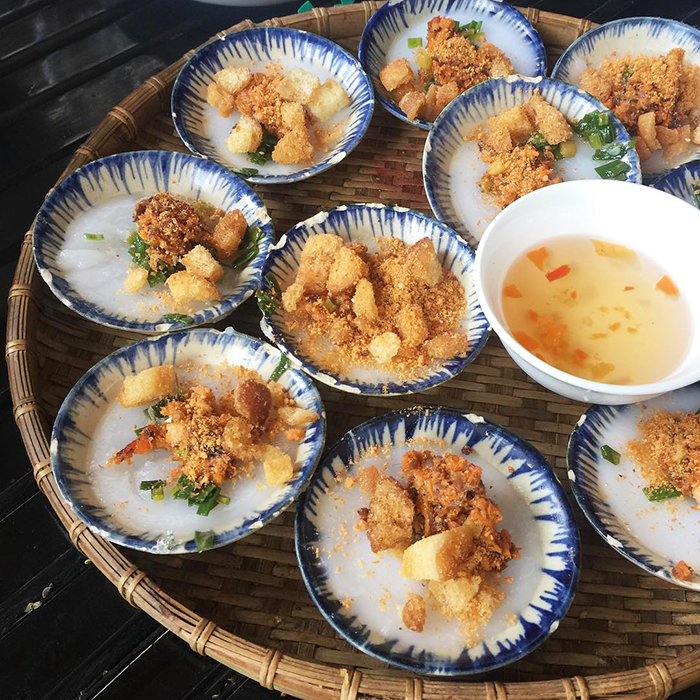The sunny and windy land of Quang Binh is not only famous for porridge soup, banh xeo, filter cake, here also a super delicious, rustic shrimp lice cake with pure white color. A plate will be lined up with layers of cake regularly, then sprinkled with a layer of yellow lice shrimp (Quang Binh’s own specialty), minced shallot leaves and slivers of fat to eat with a cup of lemon chili sauce, diluted super delicious.

Reference price: 10,000 – 15,000 VND/disc
Suggested delicious places to eat:
- Beo Con Cake Shop – Ngo Gia Tu – City. Dong Hoi – Quang Binh
- Tu Quy Quan – 17 Co Tam – City. Dong Hoi – Quang Binh
Source: Collected internet.
Hello friends! Greetings are always valued by Vietnamese people in communication, it seems to bring smoothness and luck to a new beginning or a new day. Vietnamese people have a saying "Greetings are higher than the feast" to show respect and politeness in communication with the other person. Greetings also show the friendliness and hospitality of Vietnamese people. So, wherever you go in Vietnam or whoever you meet, you will receive a greeting!
According to the ups and downs of the nation's history, Vietnamese customs and practices are constantly being innovated according to social trends. One of the oldest and most influential customs in history is the custom of chewing betel. This is a custom that dates back to the Hung King period and originates from the legend of Trau Areca and this custom has become a typical image of the brotherhood and love between husband and wife of Vietnamese people. Not only the custom of chewing betel, Vietnam also has another custom that was born in ancient times, which is the custom of welcoming the new year, also known as Tet - traditional Tet.
Vietnam's history began from 1 to 2 thousand years BC. Over many centuries with the Ly, Tran, Le, and Nguyen dynasties, from the mid-19th century, Vietnam became a French colony. After the August Revolution, the Democratic Republic of Vietnam was born. The Battle of Dien Bien Phu in 1954 marked the end of the French in the territory, but Vietnam was divided into two countries: the Democratic Republic of Vietnam in the North and the Republic of Vietnam in the South. After the events of April 30, 1975, Vietnam was unified and from July 2, 1976, officially named the Socialist Republic of Vietnam.
Religion in Vietnam is quite diverse, including Buddhism (both Mahayana, Theravada and some modified groups such as Hoa Hao, Tu An Hieu Nghia); Christianity (including Catholicism and Protestantism); endogenous religions such as Cao Dai; and some other religions (Hinduism and Islam). Different types of folk beliefs also have a lot of influence. The majority of Vietnamese people consider themselves non-religious, even though they still go to religious sites several times a year...